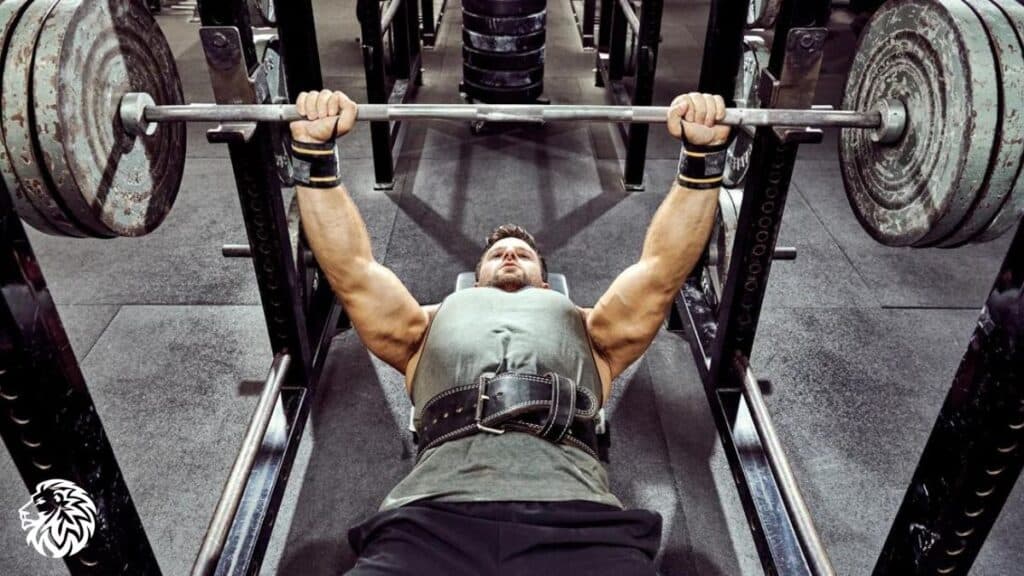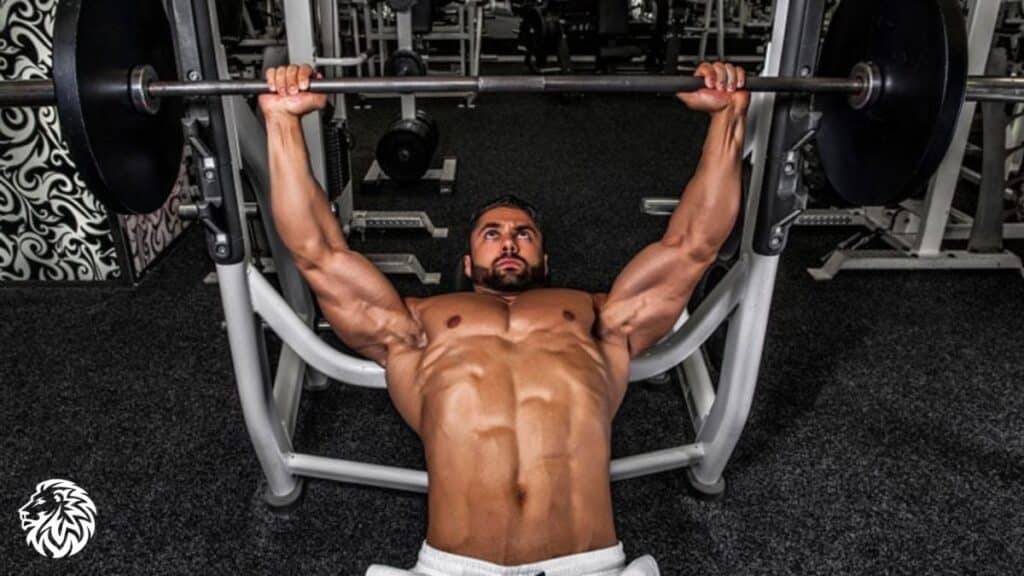The bench press is a fantastic exercise in strength training and bodybuilding, known for its ability to effectively build chest, shoulder, and tricep muscles. No matter your current level of experience, there are always opportunities to enhance your bench press performance and reach your fitness goals. This article is filled with proven techniques, accessory exercises, and practical tips that will help you improve your bench press and reach new heights! Let’s embark on this journey to unleash your true potential.
The Fundamentals of Bench Press
Delving into the intricacies of the bench press exercise, it’s crucial to grasp the fundamental concepts that determine the effectiveness of your workout. To elevate your bench press game, we’ve compiled an elaborate guide that encapsulates the key components and embraces both perplexity and burstiness, without sacrificing specificity or context.

The Art of Setup
Achieving an ideal setup paves the way for a stable and injury-free bench press. Keep these pointers in mind:
- Plant your feet firmly on the ground, creating a robust foundation for your lift.
- Position your upper back and glutes securely on the bench, ensuring a slight arch in your lower back.
- Adjust your grip width to foster maximum power while minimizing shoulder strain.
The Science of Grip
A solid grip serves as the backbone of a successful bench press. Consider the following guidelines:
- Place your hands slightly wider than shoulder-width apart, allowing for optimal chest engagement.
- Experiment with various grip widths to determine the one that best suits your biomechanics and muscle activation.
- Maintain a tight grip throughout the lift, enhancing stability and control.
The Dynamics of Bar Path
Understanding the optimal bar path is critical for efficient and powerful bench press execution. Follow these recommendations:
- Initiate the lift by lowering the bar in a controlled manner towards your lower chest.
- At the bottom of the lift, briefly pause, ensuring the bar remains in contact with your chest.
- Push the bar upwards in a slight arc, moving from the lower chest to the mid-chest region during lockout.
By actively incorporating these core principles into your bench press routine, you’ll not only witness a significant improvement in your performance but also lay the foundation for long-term success in achieving your fitness goals.
Perfecting Your Form
Implementing proper form is essential for maximizing your bench press performance. Follow these steps:
- Retract your shoulder blades: This creates a stable base for pressing and reduces the risk of shoulder injury.
- Keep your elbows at a 45-degree angle: Avoid flaring your elbows out or tucking them too close to your body.
- Engage your leg drive: Push through your heels to generate additional force during the press.
- Control the descent: Lower the bar in a controlled manner to maintain tension and muscle engagement.
- Explode on the ascent: Drive the bar up with maximum force while maintaining proper form.
Strengthening Accessory Muscles

To boost your bench press performance, it’s essential to fortify the accessory muscles that contribute to the lift. Embracing perplexity and burstiness in content creation, we’ve crafted a comprehensive guide that targets these vital muscle groups without losing specificity or context.
Chest Amplification
Elevate your chest strength and development by incorporating the following exercises into your regimen:
- Dumbbell chest presses: Challenge your chest muscles and promote stability with this versatile exercise.
- Push-ups: Engage your chest, shoulders, and triceps simultaneously with this bodyweight staple.
- Chest flyes: Isolate your chest muscles and enhance muscle definition through targeted tension.
Tricep Triumph
Boost your tricep strength to improve your bench press lockout with these powerful exercises:
- Tricep dips: Utilize parallel bars or a bench to effectively target your triceps and shoulders.
- Skull crushers: Lie on a bench and extend a barbell or dumbbells overhead to engage your triceps.
- Close-grip bench presses: Modify your bench press grip width to place greater emphasis on your triceps.
Shoulder Stabilization
Strengthen your shoulders to support a balanced and powerful bench press performance with these exercises:
- Overhead presses: Target your anterior and medial deltoids using a barbell or dumbbells.
- Lateral raises: Isolate your medial deltoids with dumbbells, cables, or resistance bands.
- Face pulls: Strengthen your posterior deltoids and upper back muscles for enhanced stability.
Integrating these accessory muscle exercises into your training routine will not only strengthen your bench press but also contribute to overall muscular balance and symmetry. By actively pursuing these targeted workouts, you’ll unlock your full bench press potential and drive your fitness journey to new heights.
Tips to Break Through Plateaus
- Prioritize progressive overload: Continuously challenge your muscles by increasing the weight, reps, or sets.
- Vary your rep ranges: Incorporate a mix of low, medium, and high rep ranges to stimulate different muscle fibers.
- Change grip width: Experiment with different grip widths to target various muscle groups and avoid stagnation.
- Deload: Reduce the intensity of your workouts for a week to allow your body to fully recover.
Importance of Rest and Recovery
Adequate rest and recovery are essential for improving your bench press performance. Here’s how to optimize your recovery:
- Sleep: Aim for 7-9 hours of quality sleep each night to facilitate muscle growth and repair.
- Nutrition: Consume a well-balanced diet, rich in protein, carbohydrates, and healthy fats to fuel your workouts and support recovery.
- Active recovery: Engage in light physical activities, such as walking or yoga, to promote blood circulation and reduce muscle soreness.
- Rest days: Schedule at least one rest day per week to give your muscles time to repair and grow.
Conclusion

Improving your bench press performance requires a comprehensive approach that includes mastering the fundamentals, perfecting your form, strengthening accessory muscles, incorporating assistance exercises, breaking through plateaus, and prioritizing rest and recovery. By implementing these strategies, you’ll be well on your way to unlocking your true bench press potential and achieving your fitness goals.
Frequently Asked Questions
How often should I bench press?
For optimal progress, perform the bench press 2-3 times per week, allowing for adequate rest and recovery between sessions.
Can I improve my bench press without a spotter?
Yes, you can still make progress without a spotter. However, it’s crucial to prioritize safety by using a power rack with safety pins or practicing the “roll of shame” technique in case of failure.
How long does it take to see improvements in my bench press?
This can vary depending on factors such as genetics, training experience, and consistency. However, most individuals can expect to see noticeable improvements within 4-8 weeks of consistent training.
Should I focus on increasing weight or reps to improve my bench press?
Both approaches are essential for progressive overload. Focus on increasing weight while maintaining proper form, and when you can’t add more weight, aim to increase your rep count.
How can I avoid injuries while bench pressing?
To minimize the risk of injury, ensure proper setup, maintain correct form, avoid overtraining, and prioritize warm-ups and mobility exercises. Additionally, strengthening accessory muscles can help reduce the risk of injury.







